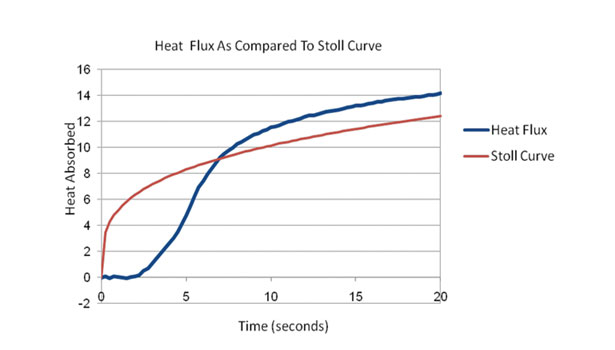Thermal Protective Performance, or TPP, is a simple way to measure how many seconds of heat protection your personal protective equipment (PPE) provides in a controlled test environment. The TPP rating is particularly significant for workers who confront the threat of flash fire exposure every day.
What is the TPP rating?
The TPP rating is a measurement of a protective garment’s thermal insulating performance against convective and radiant heat exposure. A garment’s TPP score is simply two-times the number of seconds it takes for a second-degree burn to occur when exposed to a 2.0 cal/cm2 flame.
For example, a flame-resistant (FR) garment with a TPP rating of 9 cal/cm2 would equate to 4.5 seconds of protection until a second-degree burn would occur on human skin in the conditions simulated in the TPP test.
The higher the TPP rating, the higher the level of protection provided by the garment.
The latest performance requirements for TPP are defined in NFPA 2112: Standard on Flame-Resistant Garments for Protection of Industrial Personnel Against Flash Fire. NFPA 2112 specifies the minimum design, performance, certification and testing requirements for FR fabric and garments for use in areas at risk from flash fires. These testing platforms also serve as tools for comparing the relative heat-protection performance of different FR materials. All protective fabrics and garments must meet the minimum NFPA 2112 requirements to be considered flame resistant.
NFPA 2112 requires a minimum TPP of 6 cal/cm2 with a three-inch spacer between the fabric and heat source and three cal/cm2 without a spacer. The TPP score without a spacer is more representative of the heat and flame protection a garment will provide as it shows protection when a fabric is right next to the skin. Rarely is there three inches of space between your clothing and your skin.
Of note, in the 2012 edition of NFPA 2112, the terminology “Thermal Protective Performance” was updated to “Heat Transfer Performance,” and the testing method was changed from the NFPA 2112 TPP test method to the ASTM F2700 HTP test method. However, the requirements remain at 6 cal/cm² spaced and 3 cal/cm² in contact.
How is the TPP rating calculated?
The face of a six-inch square fabric sample is simultaneously exposed to a convective heat source (two gas burners) and a radiant heat source (a bank of heated quartz tubes). Both heat sources are calibrated to ensure that heat is applied at the rate of 2.0 cal/cm2. Copper calorimeters measure how much heat is transferred through the fabric, and a specially designed data acquisition program accurately records the temperature change on the opposite side of the fabric. This approximates what the temperature change would be like on the surface of the skin beneath the protective fabric.
The rate of rise in temperature captured in the TPP test is plotted on a graph, and this slope of the temperature vs. time trace is used in conjunction with calorimeter constants to compute heat flux.
This heat flux curve is then compared with a second curve called the Stoll curve, named after the burn-injury research conducted by Alice Stoll and Maria Chianta in the late 1950s and early 1960s. The Stoll curve shows the blister point of human skin as a function of heat and time. The point of intersection between these two curves is the number of seconds after exposure until the human tissue reaches the second-degree burn point. Multiplying that time in seconds by two will give you the actual TPP rating.
In this example, the heat flux curve intersects the Stoll curve at 6.75 seconds, resulting in a TPP rating of 13.5.
What are the limitations of the TPP rating?
A protective garment may meet the NFPA 2112 requirements, but the garment’s performance in actual exposure conditions should also be considered. As mentioned above, TPP testing is conducted under controlled laboratory conditions, where the fabric sample is maintained in a static, horizontal position with a constant heat source and without movement. Protective garments that simply meet the standard can often shrink and char when end-use temperature and pressure conditions are factored in and may break open as the worker is moving about in flash fire conditions.
TPP testing is also limited to short exposure because the model used to predict burn injury is limited to predictions of time-to-burn for up to 30 seconds and predictions of time-to-pain for up to 50 seconds. Also, the procedure only tests against hot surfaces up to 600°F. Flash fires in manufacturing, petrochemical and chemical industrial sites are rarely of short duration and would likely exceed 2000°F.
Ready for the worst case
Despite these limitations, the TPP rating of a protective garment is a great indicator of just how much protection a garment will provide in the event of a flash fire. Selecting PPE with higher TPP ratings — ratings that far exceed the standard — will equip workers with the highest level of protection should they suddenly encounter a worst-case scenario.






